| |
|
Releasing Your Dog From
a Trap.
Be prepared for the unthinkable -- it
could save your dog's life!!
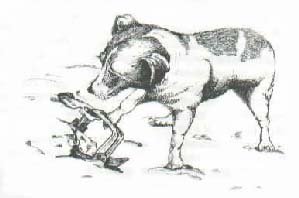
A regular long
spring trap, coil spring trap or snare is generally easy
to get an animal out of.
In all cases,
cover the dog's head with a shirt or jacket to act as
both a muzzle and to calm the dog down. Though your dog
may be friendly, most dogs will bite reflexively
when in pain. While the trap may not be hurting the
animal, it will scare him, and when you release the
springs of the trap, blood will rush back into the foot
and it may sting sharply for a moment.
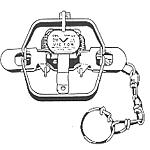 |
This is a
typical coil spring leg hold trap. The
trap can be released by stepping down on the
spring to the left and right of the center pan.
|
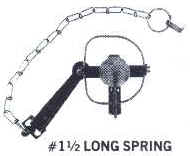 |
This is a
typical long spring leg hold trap.
The trap can be
released by stepping down on the leaf spring to
the left of the center pan. Double leaf springs
will have springs on both sides -- step on both
of them at once, as you would a coil spring trap.
|
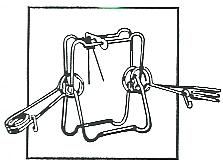 |
This
is a conibear trap, and if your dog is caught in
one, it is in serious
trouble, as this trap is designed to
kill. See instructions below on how to release an
animal from this kind of trap -- it is difficult
and time is of the essence! |
Releasing Your Dog
From a Conibear Trap
The Conibear Trap-
Shown in sprung position.
Carry 2 long, strong, boot-type shoestrings
with you at ALL times.
|
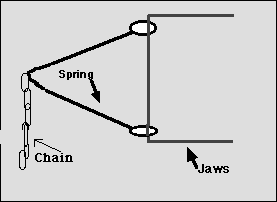 |
To release the trap, tie
one end of a shoestring to the top loop of
the spring where it runs along the jaws, run
the shoestring through the bottom spring loop
and then back through the top spring loop.
|
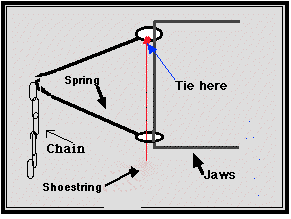 |
Then, stand on the
trapchain, pinning the trap to the ground and
haul up on the shoestring This will compress
the spring. Pull and take up the shoestring
until both sides of the spring meet. Tie off
the shoestring and repeat the process on the
other side of the trap, if necessary.
|
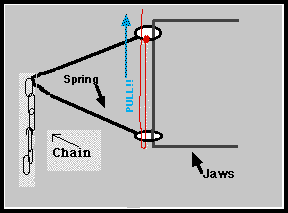 |
|
|
|
| |
|
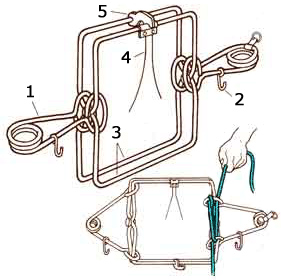
In the picture at the top, the trap is set and
ready to kill your dog.
#1 are the springs. They are very powerful and
when they are triggered, they push the pivoted jaws
closed -- the X at the pivots widens.
#3 are the jaws. They do the crushing.
#2 are simple safety catches you put on while you
are setting the trap in place. They swing off once that
is done -- safety off and the trap is ready to fire.
#5 is the "dog" or bit of metal that holds
the jaws together. It is under a lot of pressure and
has a very shallow, rounded groove in it that hold one
jaw against the other.
#4 is the trigger. These are thin stiff wires that
the animal presses into as it enters the den. Once these
wires are bumped, they slip the piece called the dog (#5)
loose and the four pairs of jaws come down (#3) under the
crushing drive of the springs (#1).
Important
Review Tip:
A conibear trap closes
with about 90 pounds of pressure, and if
you try to horse the jaw of the trap open by hand
(a natural reaction, as the jaws will be crushing
your dog to death), you are unlikely to succeed
in getting your dog out alive.
The trick is to focus on the SPRINGS
to the left and right of the trap, and
to follow the procedure, as outlined above, to take
the pressure off the springs.
Once the springs have been compressed
with a dog leash or piece of boot lace,
put the safety catches on, and repeat on the
other side.
|
|
|
|



